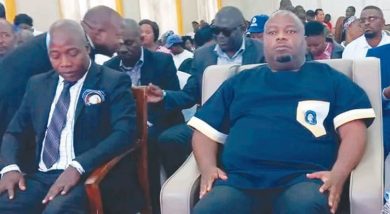Escom appoints new top brass
 Escom has a new executive management team headed by veteran engineer Peter Mtonda who has been engaged in an acting capacity as chief executive officer (CEO).
Escom has a new executive management team headed by veteran engineer Peter Mtonda who has been engaged in an acting capacity as chief executive officer (CEO).
Mtonda, who is doubling as director of distribution and customer services, a position he retained during recent interviews, replaces Arthur Mandambwe who was also serving in an acting capacity as CEO and has since gone on retirement.
Escom’s board chairperson Kayisi Sadala, in an interview on Wednesday, confirmed the new appointments which he said are effective May 1 2012.
Sadala said the position of director of transmission, previously held by former acting CEO Mandambwe, has been taken over by another engineer Jeford Banda after he succeeded during the interviews.
The chairperson said lawyer Everson Sitolo has also had his contract renewed as director of administration and corporate services after going through interviews at the end of his contract.
Sadala said another veteran engineer Evans Msiska also did well during the interviews and has replaced a long-time serving director of generation, Dapper Chapalapata, who has since retired.
Said Sadala: “Most contracts were expiring, and as is a procedure in any parastatal, we advertised. Holders of the positions advertised were free to apply, some did and some did not for various reasons I cannot disclose here.”
The board chairperson said government is seriously considering appointing a substantive CEO.
Mandambwe was appointed Escom acting CEO in November 2009, replacing the then boss Peterson Zembani whose contract was prematurely terminated.
The power utility institution is riddled with persistent blackouts and receives public condemnation due to low power generation, an uphill task Mtonda has to deal with.
Mtonda demanded a questionnaire to respond on his vision and strategies to turnaround Escom. He is yet to respond to the questionnaire.
The current power demand in the country is 330 megawatts against total installed capacity of 283 megawatts.
Less than 10 percent of Malawi’s population has access to electricity, which is considered very low in the Sadc region.





